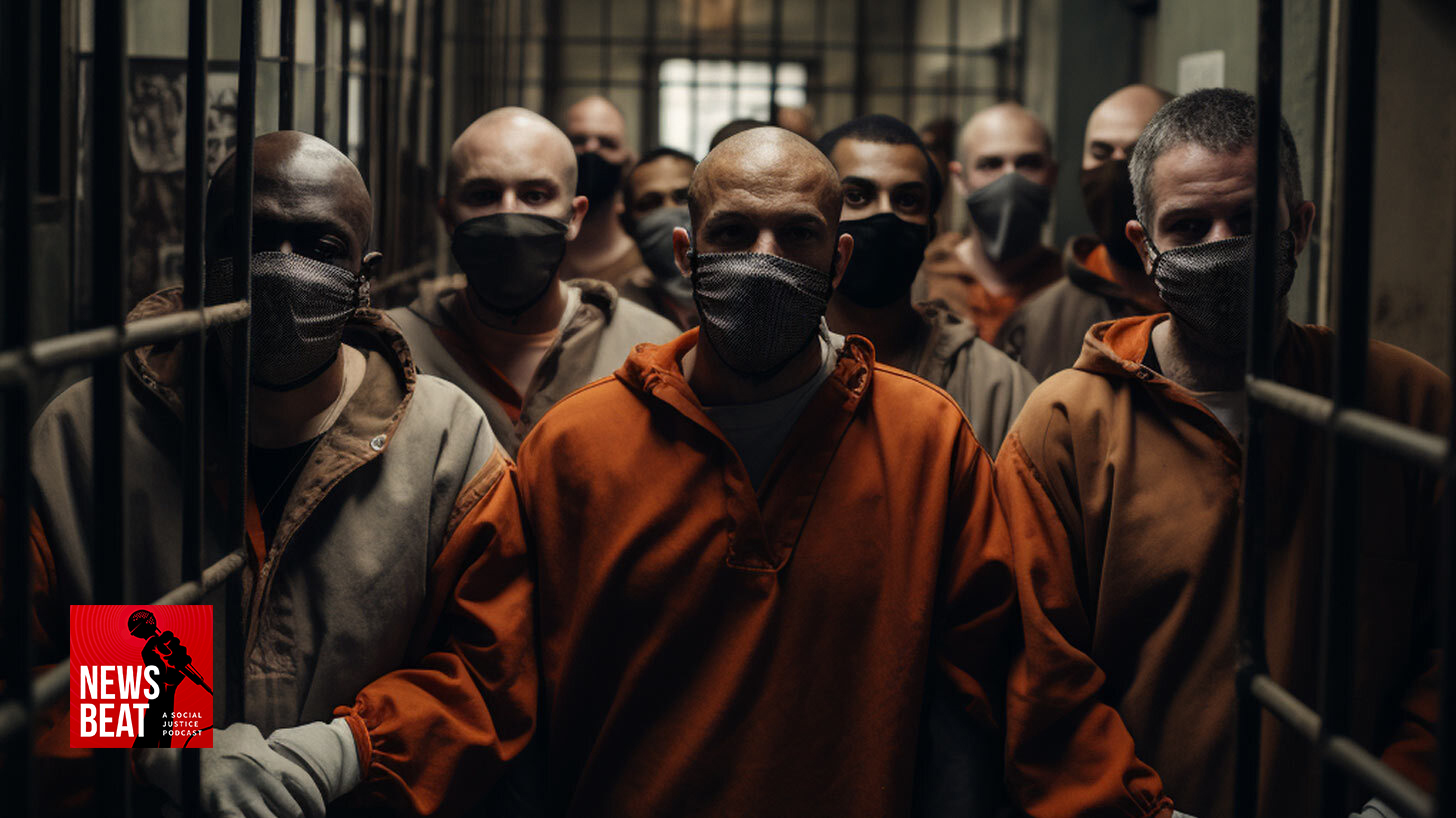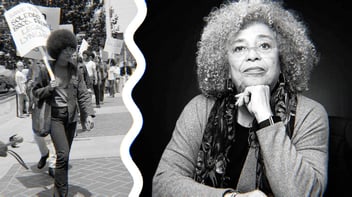Death Trap: The COVID-19 Toll on Incarcerated People Was Worse Than We Thought
 Image Description: A group of inmates in a jail cell wearing masks.
Image Description: A group of inmates in a jail cell wearing masks.
More than three years since COVID-19 began its deadly rampage through U.S. jails and prisons, which were wholly unprepared for an outbreak of even lesser significance nevermind one resulting from a global pandemic, we’re only now getting a more precise picture of the far-reaching consequences of the virus’ deadly assault.
New research published in Science Advances, an open-access journal maintained by the American Association for the Advancement of Science (AAAS), found that mortality inside U.S. prisons more than tripled between 2019 and 2020—the year COVID-19 was declared a pandemic.
The data, which accounts for 47 states, the Federal Bureau of Prisons, and Washington, D.C., represents a 77 percent year-over-year increase, a shocking spike that underscores the porous nature of healthcare services inside these walled institutions. At the time, the pandemic ignited renewed attention on America’s mass incarceration regime, bolstered by decades-long tough-on-crime policies that have disproportionately impacted Black and brown communities. For perspective, at the time of the COVID-19 outbreak, California’s state prisons “held 33 percent more prisoners than they were designed to hold.”
In total, there were 6,088 deaths inside U.S. prisons in 2020, compared to 4,206 deaths the previous year, according to the analysis. Deaths were “substantially” higher, researchers said, despite efforts to reduce jail and prison populations—measures criminal justice reform advocates hoped would extend beyond the pandemic emergency but were short-lived.
While COVID-19 contributed to the increase in mortality, it wasn’t the only factor at play. As the analysis notes, the Bureau of Justice Statistics (BJS), an arm of the Justice Department, counted 2,490 COVID-19-attributable deaths from March 2020 to February 2021. BJS, however, didn’t take into account collateral non-COVID-19 deaths, including natural causes or “unnatural causes,” such as suicide, accidents, homicide, trauma, or overdose.
“Evidence suggests that focusing on COVID-19 deaths in prisons undercounts the total mortality toll of the pandemic,” researchers write. “COVID-19 deaths are both underreported and fail to capture the likely increases in rates of collateral, non–non-COVID-19 deaths during the pandemic.”
Echoing criticisms from reformers during the height of the pandemic, researchers noted that data was inconsistently maintained across jurisdictions.
For example, back in 2020, UCLA Law Professor Sharon Dolovich, director of the UCLA Law COVID-19 Behind Bars Data Project, said that “lack of transparency” was pervasive.
“There’s a culture of secrecy that has been allowed to fester in American carceral facilities, and it’s antithetical to the democratic project,” she told News Beat.
Those in charge of ensuring safe and healthy conditions even failed to implement basic mitigation measures, according to a Prison Policy Initiative (PPI) report from October 2022.
“Although crowded living spaces like prisons are generally hotspots for infection transmission, only some departments of corrections followed guidance from medical professionals, public health officials, and the CDC, while others ignored even the most basic recommendations,” the organization said.
The 77 percent rise in U.S. prison mortality stands in contrast to the 23 percent increase among the general population, according to researchers, further proof that mitigation measures inside U.S. prisons largely failed, partly due to the nature of incarceration.
“Prisons have dense living arrangements that make social distancing difficult, limit resources for personal protective equipment and other infection-mitigation strategies, and generate frequent movement of staff between facilities and communities, exacerbating the risk of COVID-19 infection and death,” the authors write.
Death Sentence
Days after the World Health Organization (WHO) declared the novel coronavirus a pandemic, we reported on the potential horrors the then-uncontrollable disease could wreak on jails, prisons, and other carceral facilities across the United States.
One of the foremost experts on healthcare within these institutions told us that COVID-19’s threat to incarcerated people was more dangerous than even we imagined.
Dr. Homer Venters, an epidemiologist and former chief medical officer for New York City’s jails, warned that jails and prisons, notorious for being overcrowded and under-staffed from a healthcare perspective, are “designed” to spread communicable diseases like COVID.
“Those are not health systems that are run by or even really connected with the kind of health systems that we’re used to in the community that uses basic standards of infection control, and even data reporting and transparency about who’s getting tested,” Venters said. “And so I have grave concerns about the patients and that’s really the most important part of this.”
Remember, this is a population that includes thousands of people held pre-trial and are incarcerated because they can’t afford cash bail, reflecting the two-tiered system of America’s “justice” system.
Prisons are also home to an increasingly aging population, making them more susceptible to chronic illnesses, and putting them at greater risk for viruses such as COVID-19.
According to PPI, “older people make up five times as much of the prison population as they did three decades ago.” As a result of draconian and punitive sentencing laws, one in seven incarcerated people was serving a life sentence, despite no evidence that more severe punishments make us safer.
“One of the big drivers of making sentences longer has been the proliferation of passing of mandatory minimums,” Rachel Barkow, author of “Prisoners of Politics,” an NYU Law professor and former member of the United States Sentencing Commission, told News Beat podcast in a previous interview.
“There are mandatory minimum sentences that judges have to impose, no discretion to do otherwise,” she added. “And some of them are quite lengthy. They can be life sentences for things like drug offenses…There’s long sentences, like multiple decades for a range of crimes, from drugs to firearms to crimes involving homicide, so it’s definitely one of the big drivers.”
As a global leader in locking up its own population, America has a uniquely unhealthy obsession with mass incarceration. The pandemic underscored how failed policies, from the racist war on drugs to three-strike laws and other politically advantageous measures enacted by both ruling parties, created the conditions for suffering on a mass scale to occur.
Amid the outbreak, states and municipalities attempted to reduce jail and prison populations to mitigate the spread of the virus. Such plans were easier in jails, which mostly house people held pre-trial. From the outset of the outbreak to mid-August, 98,000 people were released from prisons and jails, according to the aforementioned UCLA database.
Criminal justice reform advocates saw an opportunity. If officials were suddenly comfortable with emergency measures to drive down the size of incarcerated populations, perhaps they could convince them to reform policies that imposed lengthy prison sentences. The most notorious of these include three-strike laws, mandatory minimums, and lesser-known truth-in-sentencing laws. The latter was spurred by the notorious 1994 crime bill and provided states with millions of dollars in grants to effectively imprison people longer.
“We‘ve filled up our jails and prisons, with people who are disproportionately people of color, but also people with serious physical and behavioral health problems,” Venters, the infectious disease expert and former NYC jails official, told News Beat at the time. “So people who are at high risk and the push of mass incarceration from the ‘80s, and ‘90s, and 2000s means that we have many older patients in these places, too. So it really is a confluence of [the] worst possible scenarios. And we have people working in these places and detained in these places that are looking at really a very perilous and looming threat.”
News Beat is an educational and political news podcast focused on social justice and civil liberties issues, melding the worlds of journalism and music. Leave the corporate media behind. Follow News Beat on your favorite podcast app and subscribe to its Substack for more in-depth coverage of critical issues.
Rashed Mian is the managing editor of the award-winning News Beat podcast and co-founder of the newly launched Free The Press (FTP) Substack newsletter. Throughout his career, he has reported on a wide range of issues, with a particular focus on civil liberties, systemic injustice and U.S. hegemony. You can find Rashed on X @rashedmian and on Bluesky @rashedmian.bsky.social.


